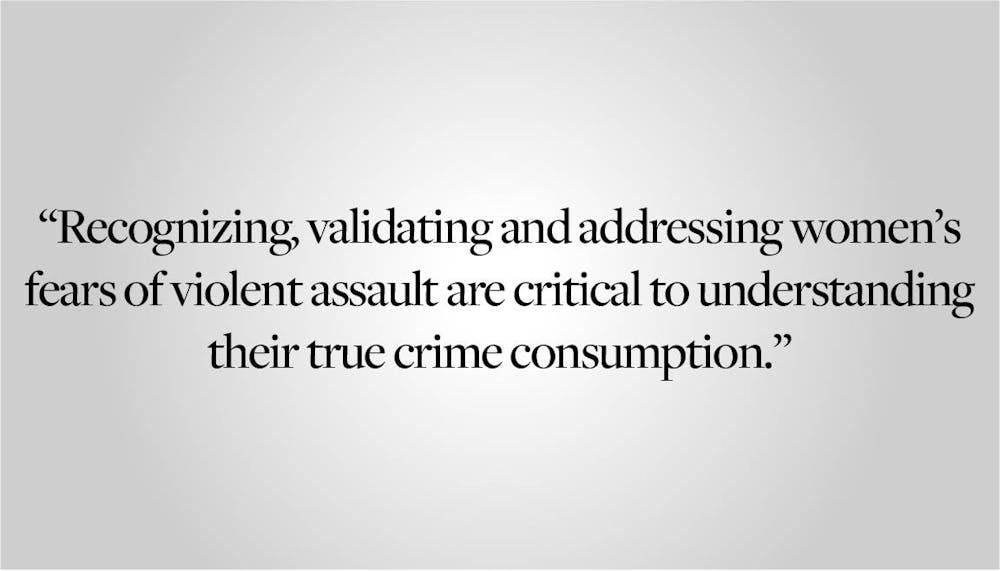Content warning: This column includes mentions of gender-based violence.
In the past few years, we have seen a boom in the popularity of true crime documentaries, podcasts and other forms of media. Media about Jeffrey Dahmer, Charles Manson and Ted Bundy, as well as lesser-known convicted criminals, has made for extremely popular viewing in recent years. This surge has been particularly prominent among women, whom a 2022 YouGov study found were more than twice as likely as men to call true crime their favorite genre. The reasons for this gender gap are complicated and difficult to discern. However, women’s increasing affinity for true crime content might be a manifestation of their own anxieties around experiencing violent crimes themselves.
Although men and women are the victims of violent crime at similar rates, men are most likely to be murdered by their friends, whereas women are most likely to be murdered by their intimate partners. This means women are most likely to be violently and fatally betrayed by the people they are supposed to trust the most — a paradigm that likely leads to a curiosity about how such tragic situations arise (and could be prevented).
Despite these comparable rates of victimization, young women are more likely to fear violent crime in part because of the puzzling and devastating nature of violent crimes against women. This increased fear of crime has in turn led to a greater need to understand and confront the issue. True crime media can therefore provide a useful resource for women to make sense of their collective fear of violent crime. In some cases, true crime media provides an outlet for worst-case scenario fantasies in which women can see their worst fears realized in order to process their own worries and arrive at a sort of inner peace.
Further, many women look to true crime narratives to find understanding and even logic in violent crime in order to avoid similar fates. By watching true crime, women might feel better able to comprehend the motives of violent criminals in order to know how to avoid similarly dangerous situations in their own lives. This exploration can even carry with it a feeling of agency, which helps women not to feel powerless against potential assailants and allows them to feel safer in their environments.
Despite the possible catharsis of true crime for some women, a great deal of the true crime media that women are consuming can be problematic. For one thing, compelling narratives of criminal activity can de-center victims and exploit their stories. Another issue is the rationalization of brutal, violent crime such that we become desensitized to its tragic nature, and possibly even find logic in its perpetration. Finally, true crime narratives that feature female victims disproportionately cover white women over women of color, despite the fact that Black and Indigenous women are murdered at higher rates than white women.
With these issues in mind, we must try to understand female viewership of true crime through a lens of panicked necessity rather than light entertainment. A socialized yet desensitized fear of violent crime among women needs to be addressed as a root cause for this behavior. Yet, there is an even deeper cause of women’s true crime curiosity that needs to be addressed: women’s fears aren’t unfounded. The pandemic, among other social changes, has led to an increase in violence against women. Recognizing, validating and addressing women’s fears of violent assault are critical to understanding their true crime consumption and to reducing salacious content that is frequently designed to whet women’s anxiety appetites.





